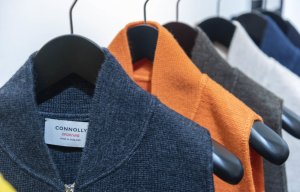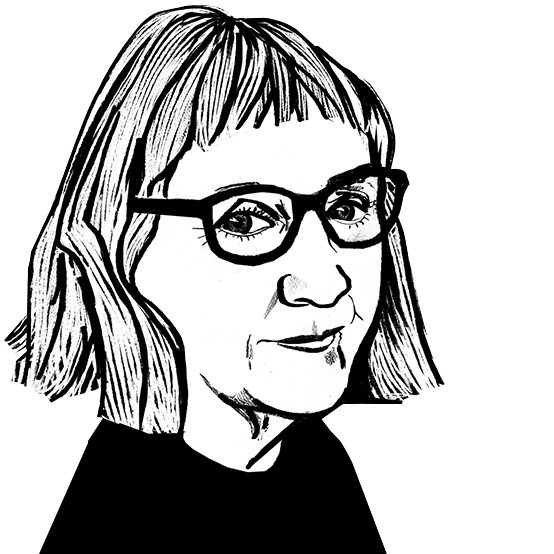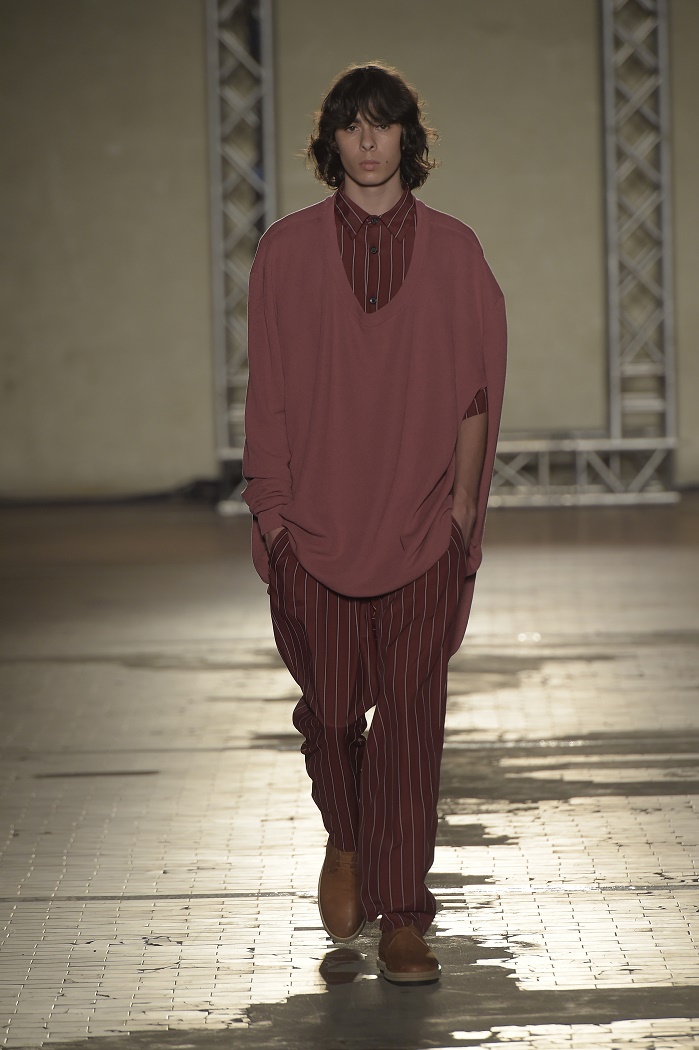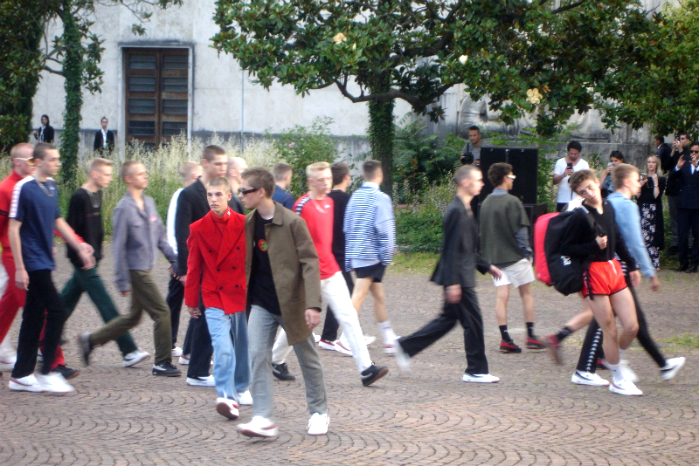
Good Vibrations at Pitti Uomo
Opinion


Knitwear was interpreted with patterns in intarsias, stripes, geometrics, and colourful designs at an entertaining and upbeat Pitti Uomo 90.

28th June 2016
Janet Prescott
|
Florence
Bright fancy looks contrasted with a new sparer classicism for summer 2017 at an entertaining and upbeat Pitti Uomo 90, which featured many side shows, including catwalk events with music and entertainment in the city, as well as the main bulk of the fashion collections in the various halls of the Fortezza da Basso.
Knitwear was interpreted with patterns in intarsias, stripes, geometrics, and colourful designs, as well as many neutral coloured underplayed designs. Textural effects were achieved by fancy stitches or different tensions in one-colour jumpers and jackets seen on the stands, and modelled by the dandies positioned outside the exhibition.
Cotton and linen were the favoured natural fibres, and there was a fair use of acrylic in blends with wool, silk or viscose for particular features. Most were blends of natural fibres: cotton/linen, wool/cotton, as well as viscose/linen, which were often used to highlight the natural qualities of the yarn, knops, irregularities and differences in tension, again giving a textured, raised look or basket weave effects.
Long loose jumpers gave a cool, casual look, in a larger gauge for more relaxed designs. Shorter, sleeveless knitted waistcoats and pullovers were used for layering with summer unlined jackets. Lightweight garments were layered, frequently over a soft shirt, with contrast designs using brighter toned mixes, light coloured in white, cream, pale blue and rose, interpreted in cotton, silk or linen.

Nautical narrow navy stripes were well spaced out on white sweaters with shoulder tabs fitted into an officer’s mess look. Raf Simons, the most anticipated big name designer with his show ‘Florence Calling’, played about with oddly proportioned knits, cut-off v neck sweaters in heavier gauge thicker wool, worn over cotton shirts printed with large digital photographs of Mapplethorpe’s work.

Features included a rich variety of stitches, with ribbon-like vertical sel coloured ripple white stripe effects at Pringle, as well as designs like stripes, checks and geometric motifs, which randomly occurred. Jacquard designs featured dramatic images like a large leaf knitted into a sweater in the same colour as the ground at Falke.
Dyeing effects at seams and necklines produced an antiqued rubbed look with faded aspects to complement the faded looks prevalent in many young hip brands of jeans and jackets. This technique could transform a classic round necked grey or blue jumper into a jeans denim-look garment, also seen at Falke.

A widespread floral theme in prints and colours included pinks, peach, pale green with sky blue, ‘feminine’ colour combos adopted widely for menswear, displayed together, put side by side, or hung up in rows to show the colour palette, e.g. turquoise, yellow, beige sweaters at Lyle & Scott, and floral themes at Harmont & Blaine.
Some Shetland wool and other thicker yarns were offered in summer knits, in lighter coloured yarns, such as white grounds and blue designs in traditional designs. White, off-white, beige and sand coloured knitwear contrasted with bright shirts and mono-coloured bright trousers.

Sportswear continued to dominate design areas, including Gosha Rubchinskiy’s crowds of young men recruited to model an egalitarian style of fashion, with sweatshirts, track suit bottoms and large sweat shirts featuring vintage slogans like Adidas, produced in traditional track and field colours like white red and blue.

The label that has a large following internationally, is appreciated for its unobtrusive but recognisable handwriting. The collection was shown at the abandoned tobacco factory in scenes reminiscent of post-soviet Eastern Europe, summing up the stark new classics.

Business intelligence for the fibre, textiles and apparel industries: technologies, innovations, markets, investments, trade policy, sourcing, strategy...
Find out more